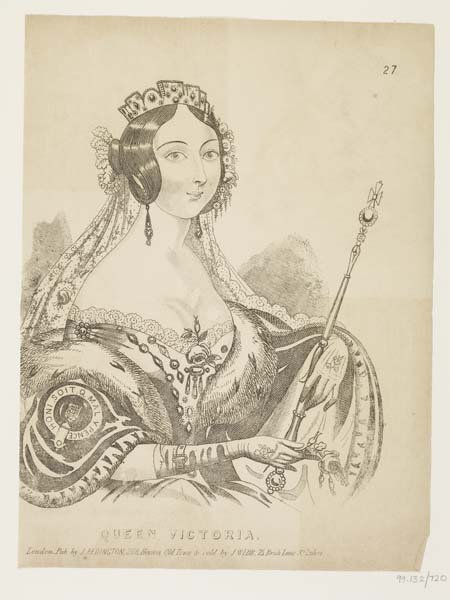Victoria, Queen of the United Kingdom
Alexandrina Victoria was Queen of the United Kingdom of Great Britain and Ireland from 1837 until her death in 1901. The second longest-ruling monarchs in British history, Victoria’s reign saw revolutionary changes in everything from art and technology to politics and society.
Victoria was daughter of Edward, duke of Kent, fourth son of King George III, and the only legitimate child of George’s sons to survive infancy. She spent her childhood as heir presumptive to the aged King William IV. It was a lonely childhood, dominated by her protective mother, Princess Victoria of Saxe-Coburg Saalfield, and by Sir John Conroy, her ambitious private secretary. Their attempt to make the young Victoria dependant on them failed and when at the age of 18 Victoria became queen she banished Conroy from her sight.
Victoria’s coronation came at a time of great political upheaval: the political balance in Britain was shifting in the wake of the 1832 Great Reform Act. The role of a constitutional monarch was still being defined. William IV was the last monarch whose death prompted an immediate parliamentary election, a relic of the days when it was assumed that Britain would need a new government to serve its new queen or king.
Victoria had a turbulent relationship with many of the British prime ministers who served in her government, driven as much by their personalities as by their politics. Until 1841 she relied heavily on the Whig Lord Melbourne, and quarrelled violently with the incoming Tory Prime Minister Robert Peel. However, in later life the Tory Disraeli was her great political favourite, helped by his generous attitude to flattery (“lay it on with a trowel”). It was through his passage of the Royal Titles Act through Parliament that Victoria was proclaimed Empress of India in 1876.
In contrast, Victoria did not enjoy an easy relationship with the Liberal Prime Minister Gladstone, reputedly complaining that “he addresses me as if I were a public meeting”. Her obvious attachment to the policies of the Conservative Party in the 1880s could have led to a dangerous collision between Parliament and a monarch who saw herself as a part of government, not just a figurehead. The degree of political influence the queen exercised even in an increasingly democratic age was unknown to the public until after Victoria’s death. Perhaps the most important legacy of Victoria’s long reign was that it transformed the role of monarch, a figure transcending party politics, into an inescapable feature of the British political landscape.
Victoria married her first cousin, Prince Albert of Saxe-Coburg and Gotha, in 1840, and wrote frankly of their love and affection in her diary. The royal household's image of cosy domesticity was enhanced by the couple’s nine children, all of whom survived to adulthood (Victoria deplored her frequent pregnancy, hating childbirth and regarding young babies as “rather froglike”). The deliberately cultivated contrast between the respectable Victorian court and the later Georgian princes, with their mistresses and illegitimate children, helped the popularity of the queen. It also encouraged the attitude of conservative moralism, not to say prudishness, often associated with the Victorian era.
Albert’s death in 1861, probably of typhoid, sent Victoria into a deep depression. She almost withdrew from public life, to an extent that roused speculation about her sanity and increased public support for republicanism. However, by the end of her life Victoria enjoyed huge popular enthusiasm. Her Golden Jubilee in 1887 and Diamond Jubilee in 1896 were both marked by wide celebration, and her death by public mourning. As a monarch, a mother, an empress and an icon, Victoria dominated the British imagination during the 19th century. It is no surprise that Victoria’s image has become emblematic of the long and significant age her reign encompassed.








